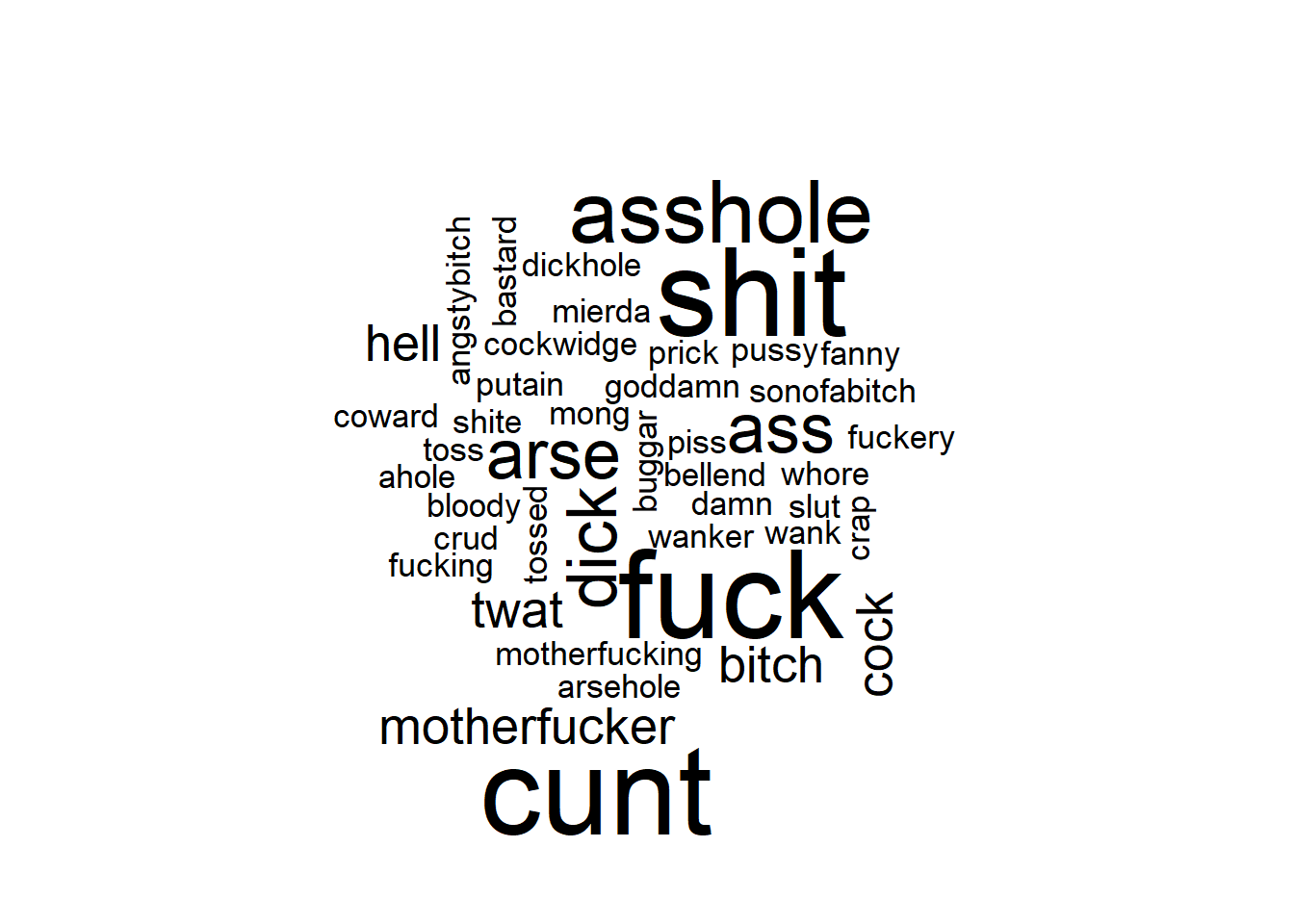
This website accompanies the Psychology of Swearing talk held on Thursday 6th October 2022 for the University of Glasgow Psychology Society.
Reading list
If you would like more information about anything presented in this talk, I recommend the following sources:
Books
- Benjamin Bergen – What the F: What Swearing Reveals About Our Language, Our Brains, and Ourselves. Amazon link.
- Steven Pinker - The Stuff of Thought. Amazon link.
- Emma Byrne - Swearing is Good For You. Amazon link.
Websites
https://stronglang.wordpress.com/
https://twitter.com/stronglang
Journal papers & pre-prints
Beattie, H., Robertson, O., Horlin, C., Spaeth, E., & Nordmann, E. (2022). Gendered attitudes towards swearing: a trans-inclusive mixed methods study of social identity, swearing norms, and behaviour.Preprint
Feldman, G., Lian, H., Kosinski, M., & Stillwell, D. (2017) Frankly, we do give a damn: The relationship between profanity and honesty. Social Psychological and Personality Science
Harris, C. L., Aycicegi, A., & Gleason, J. B. (2003). Taboo words and reprimands elicit greater autonomic reactivity in a first language than in a second language. Applied Psycholinguistics, 24(04), 561-579.
Jay, T. (2009). The utility and ubiquity of taboo words. Perspectives on Psychological Science, 4(2), 153-161.
Jay, T., & Janschewitz, K. (2008). The pragmatics of swearing. Journal of Politeness Research. Language, Behaviour, Culture, 4(2), 267-288.
Jay, K. L., & Jay, T. B. (2013). A child’s garden of curses: A gender, historical, and age-related evaluation of the taboo lexicon. The American Journal of Psychology, 126(4), 459-475.
Jay, K. L., & Jay, T. B. (2015). Taboo word fluency and knowledge of slurs and general pejoratives: deconstructing the poverty-of-vocabulary myth. Language Sciences, 52, 251-259.
Mackay, D. G., Shafto, M., Taylor, J. K., Marian, D. E., Abrams, L., & Dyer, J. R. (2004). Relations between emotion, memory, and attention: Evidence from taboo Stroop, lexical decision, and immediate memory tasks. Memory & Cognition, 32(3), 474-488.
Stephens, R., Atkins, J., & Kingston, A. (2009). Swearing as a response to pain. Neuroreport, 20(12), 1056-1060.
Van Lancker, D., & Cummings, J. L. (1999). Expletives: Neurolinguistic and neurobehavioral perspectives on swearing. Brain research reviews, 31(1), 83-104.
Relationship between age and vocabulary
The correlation between age and animals is r = -0.47, p = 0.006.
The correlation between age and swears is r = -0.12, p = 0.461.
The correlation between swears and animals is r = 0.4, p = 0.018.
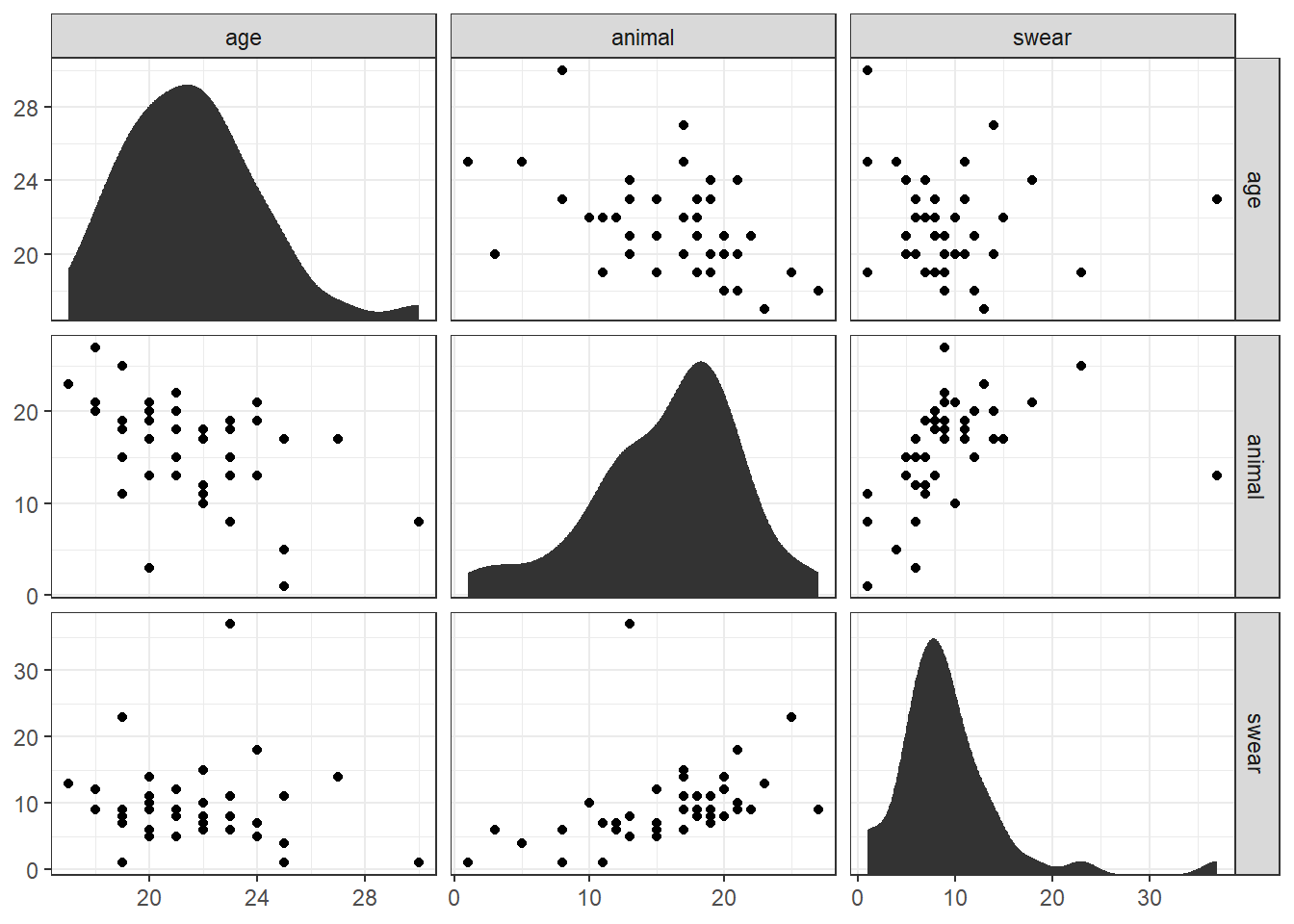
Vocabulary scores by gender
General fluency
| Man |
13.75 |
| Woman |
16.19 |
| Nonbinary |
16.43 |
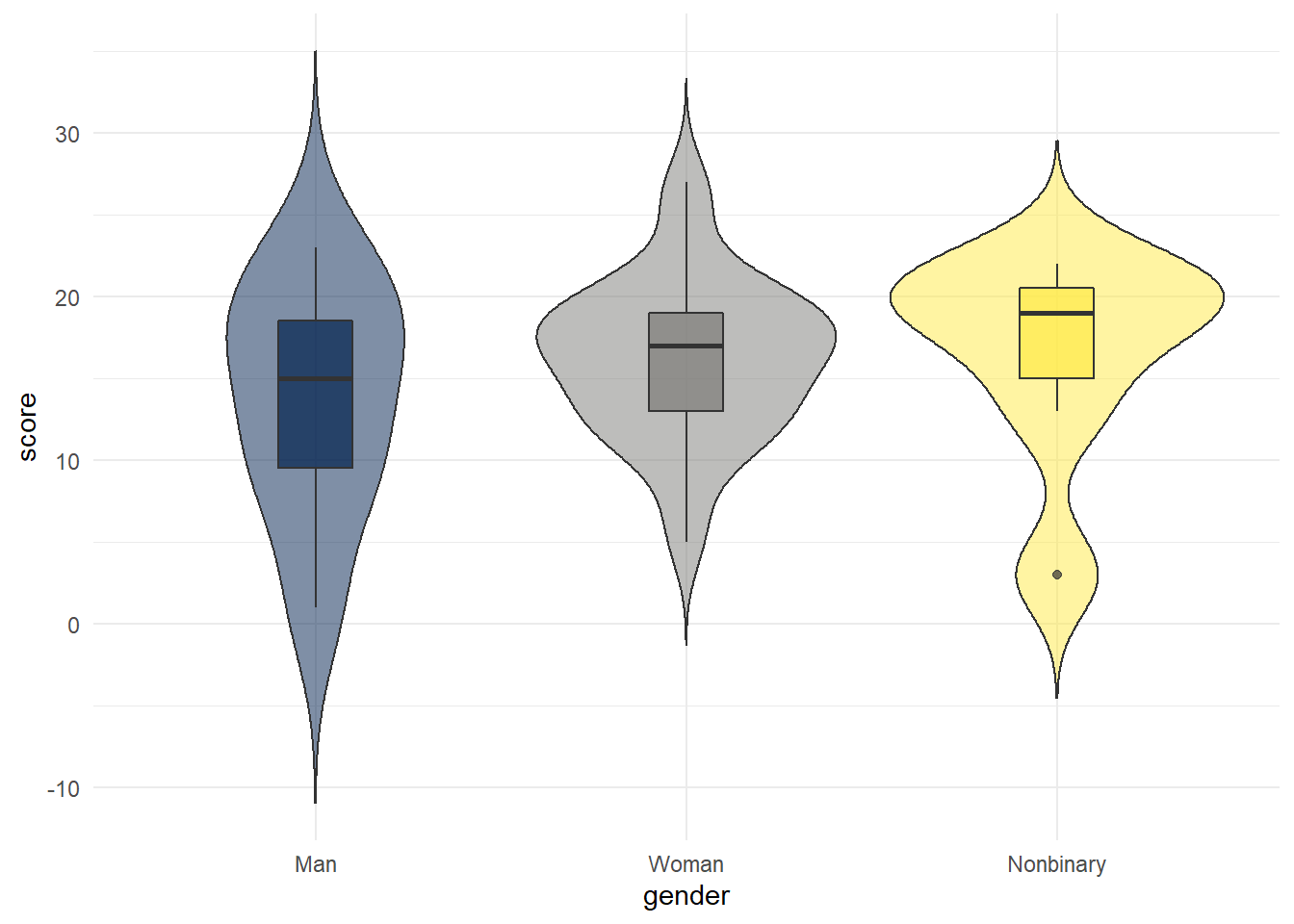
Swearing
| Man |
7.12 |
| Woman |
9.81 |
| Nonbinary |
10.43 |
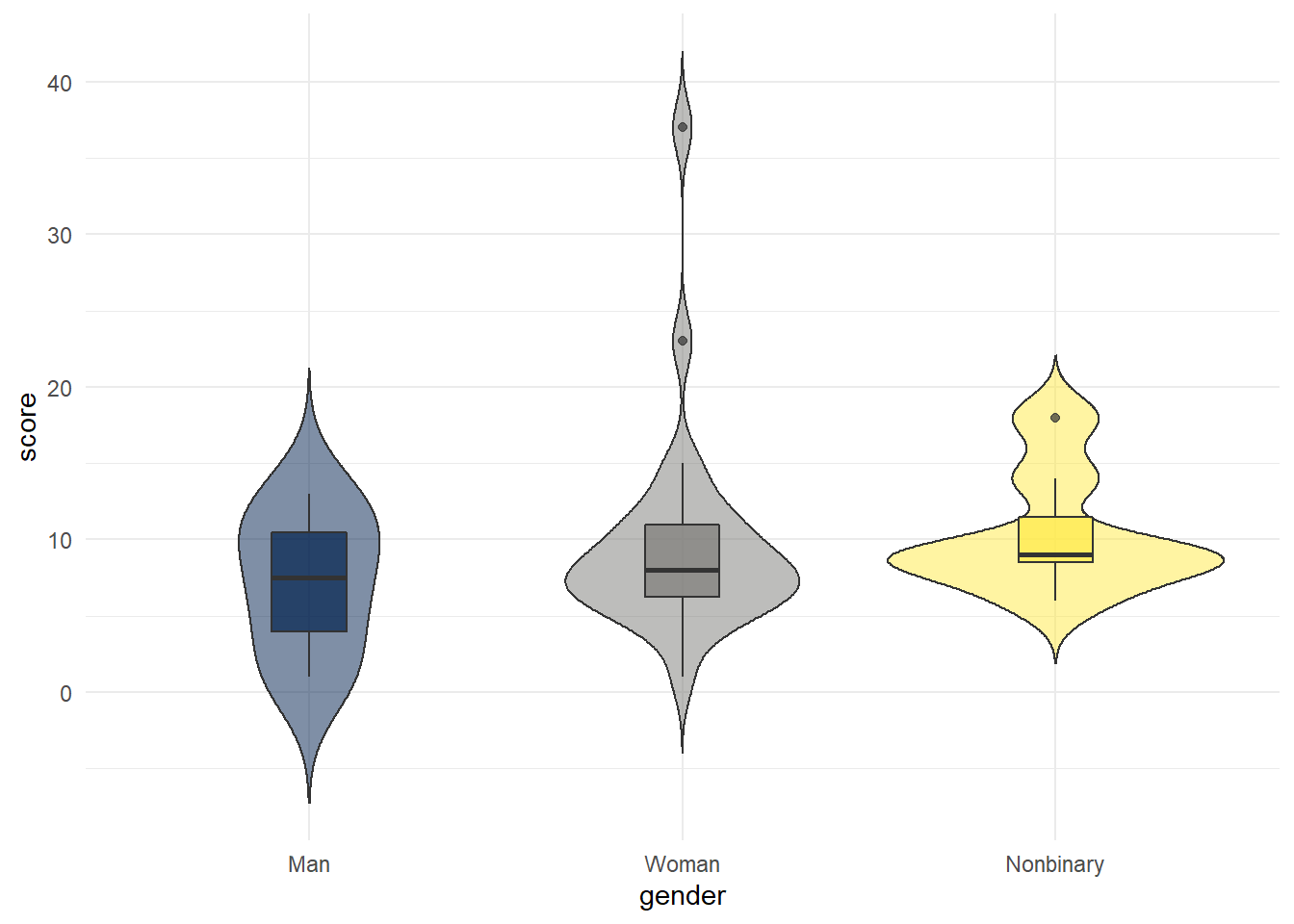
Most frequent swear words
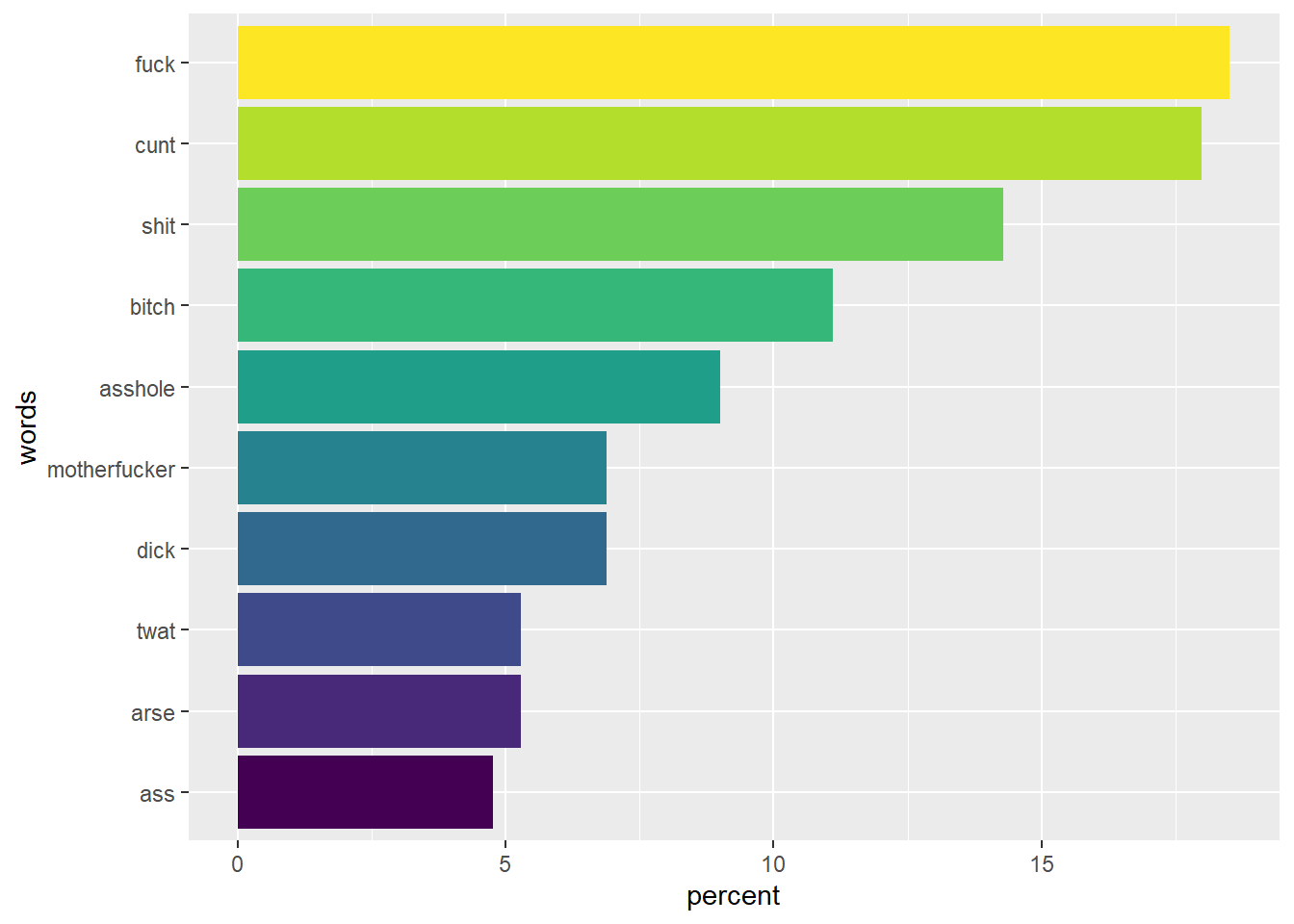
Word cloud
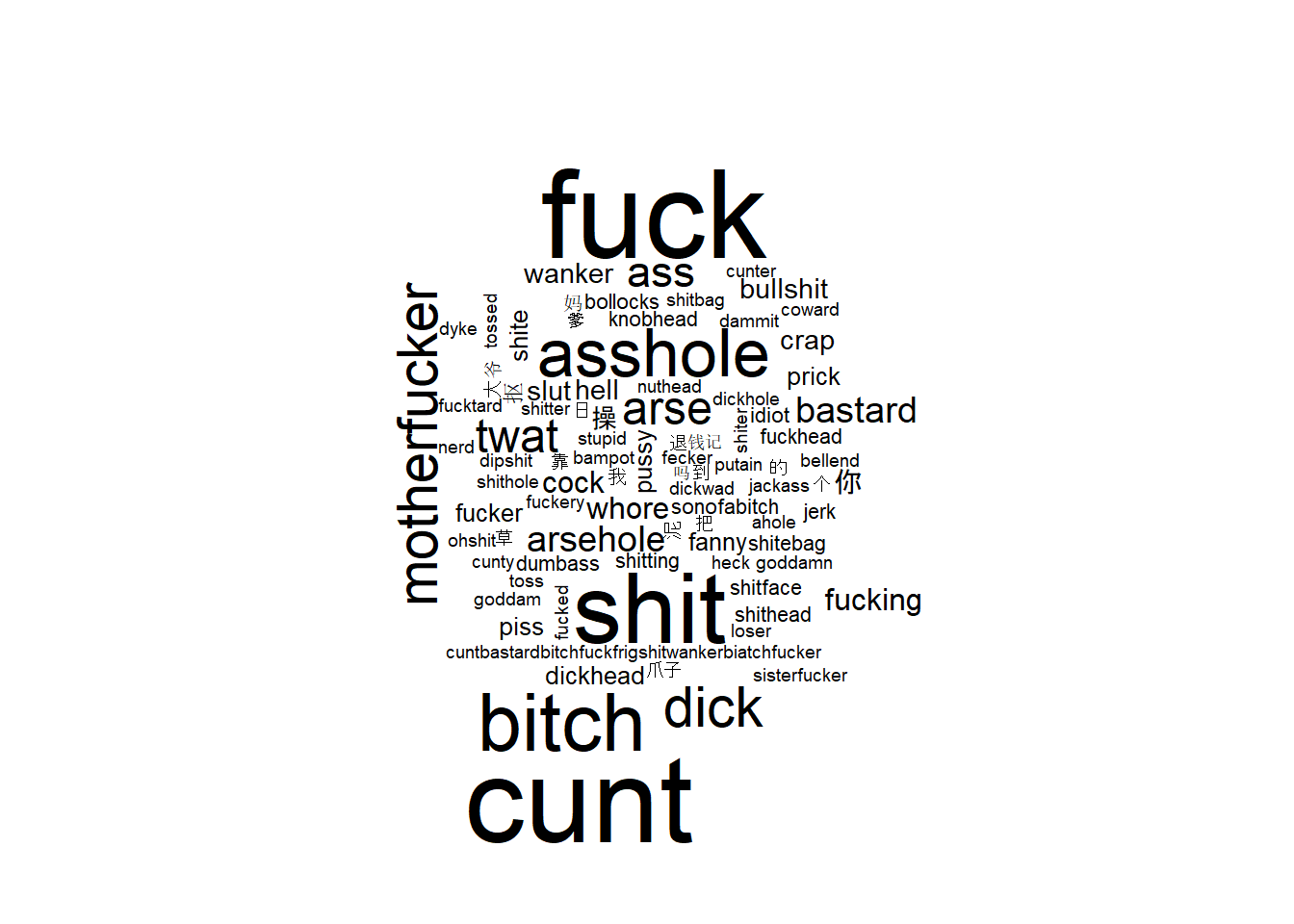
Most frequent words by gender
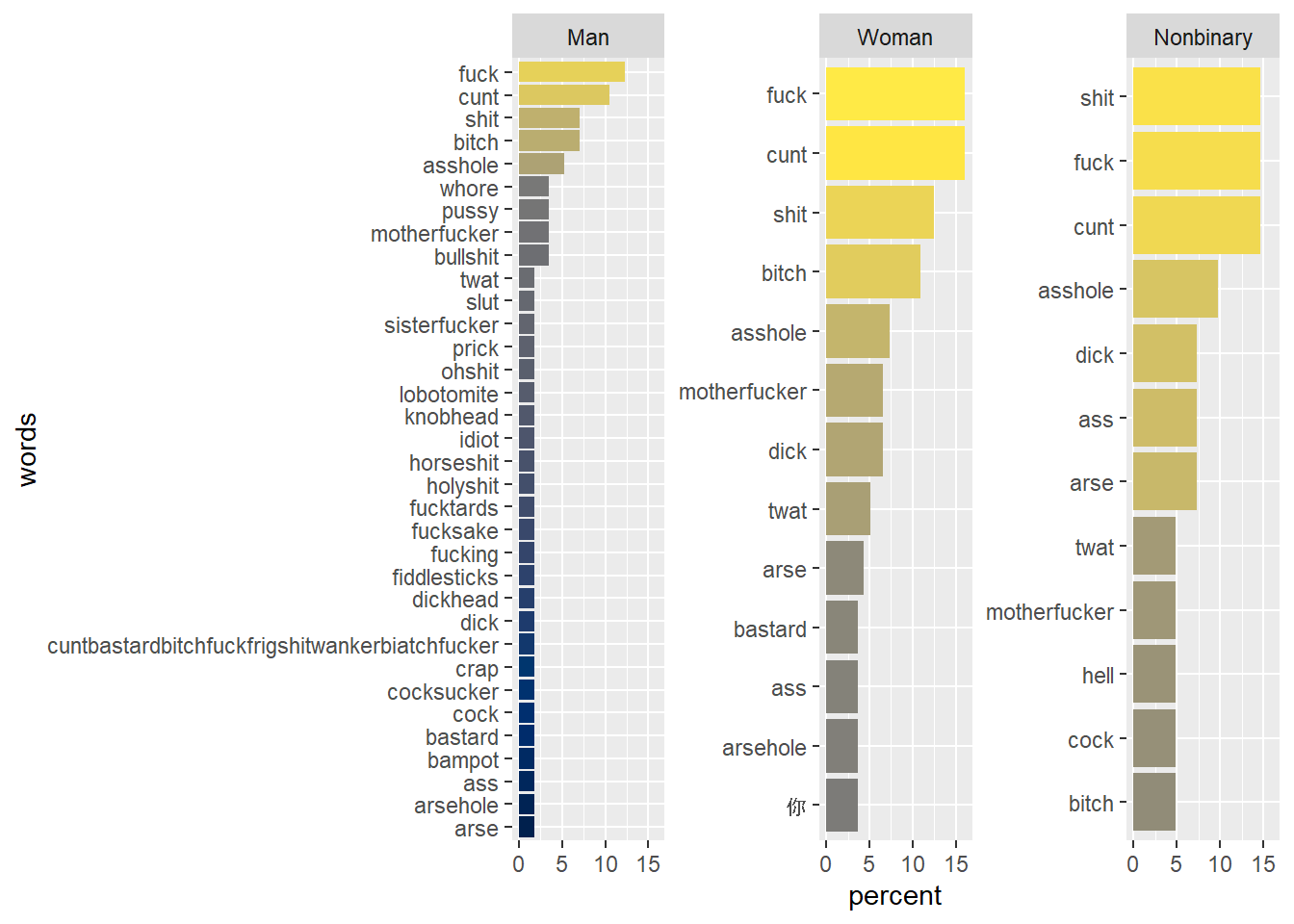
Word cloud - men
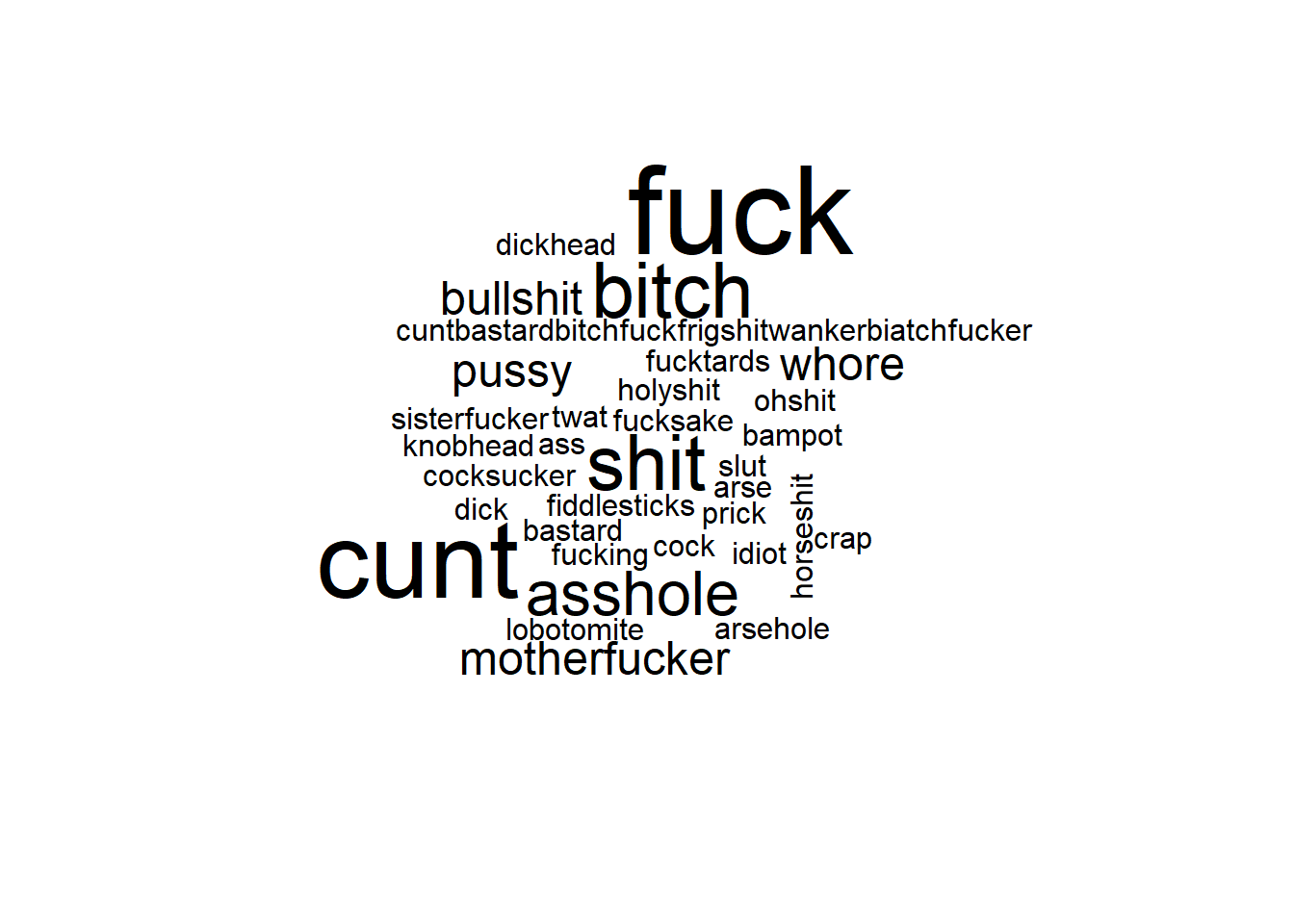
Word cloud - women
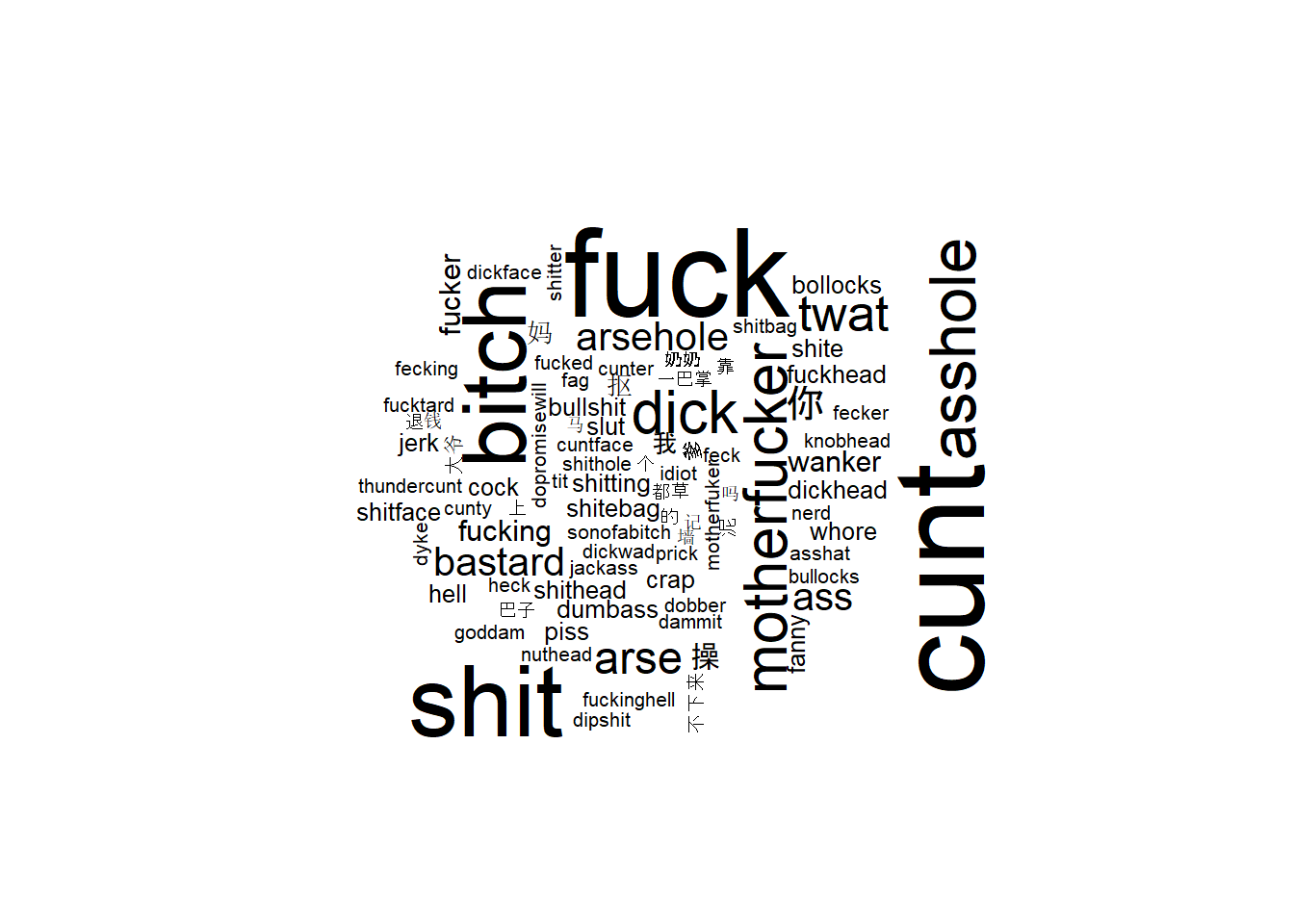
Word cloud - non-binary
